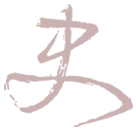Editor's Preface
![]() Benjamin Penny
Benjamin Penny
In this issue of East Asian History, we continue our project of reprinting works of the late Professor Igor de Rachewiltz, doyen of Mongolian Studies. As I noted in the Preface to issue 40, before his death Igor had worked with us in the Australian Centre on China in the World, where he was based, to collect and make available articles that he considered represented his most important work, and that were unavailable online. The two articles in this issue show Igor’s characteristically extraordinary scholarship and erudition and, we hope, will be appreciated by students of Mongolian history.
The four original articles in this issue, though on very different themes, all open out research in important new directions. Hung-yi Chien explores ground on which many have walked, literally, in her environmental history of that district of Taipei now known as Da’an. Such ‘sedimentary’ historical study uncovers layers of topography, settlement, land use, naming, and meaning in a way that is both revelatory and possibly unsettling. Di Lu’s study of part of a Tang Dunhuang manuscript brings together philology, literary studies, and medical history to reveal — as much as it is possible to do — the intriguing encoding of the names of medicinal drugs in a literary text. As much as the author notes this is a ‘revisitation’ of a known text, his scientific knowledge brings genuinely new insights to the study of Dunhuang manuscripts. Li-kuei Chien’s work on the circulation of ‘pensive’ bodhisattva images — those with one foot resting on the opposite knee — in the sixth century between the Chinese mainland and the Korean peninsula breaks new ground in its detailing of the routes of transmission of Buddhist sculptural motifs. In a period when the textual record relating to these questions is at best patchy, Chien’s research also broadens our view of the communications between states and regions during the medieval period in general. Finally, Hannibal Taubes’s study of murals in village buildings in northern Hebei uncovers a remarkable local rural tradition of wall painting across the last few centuries that shows both the creeping in of modernity and the persistence of local religious and theatrical traditions. Taubes’s research also performs an act of documentation of this work as, in some cases, it fades and crumbles; memorialising the performing and painting practices that informed it, and the lives of the people who created it, and lived among and around it.


